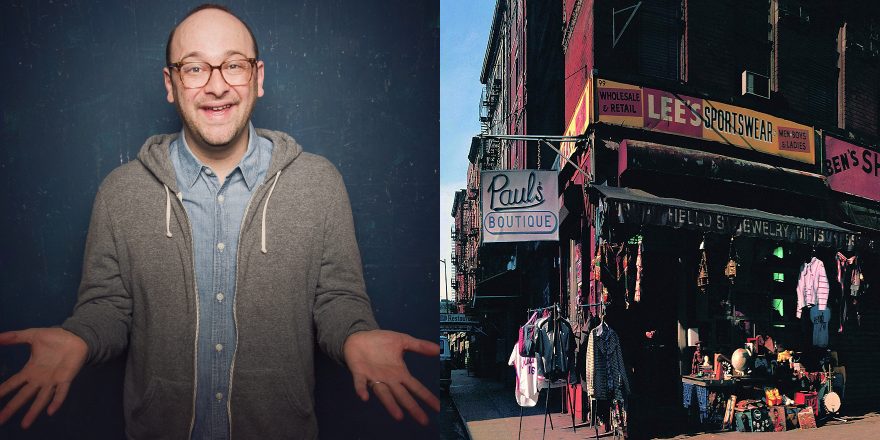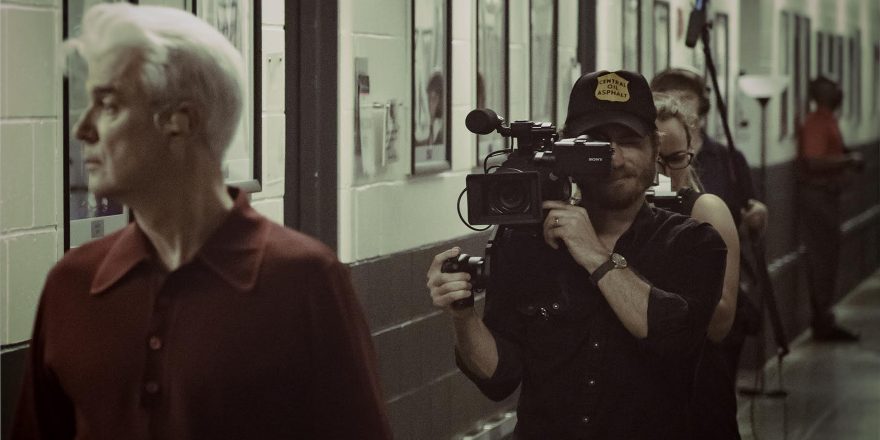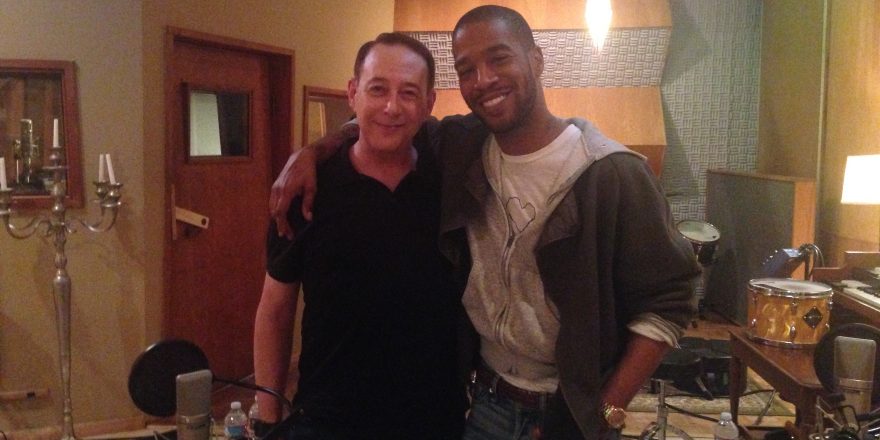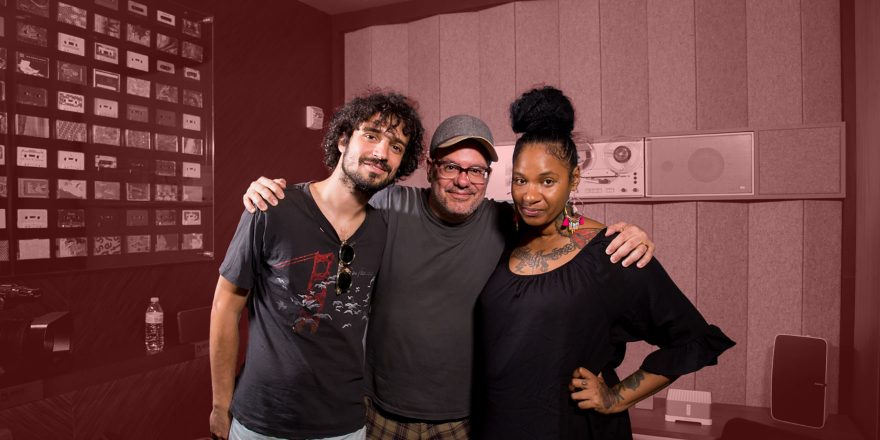Over the festive break, Talkhouse Film is revisiting some of its most read (or listened to) pieces of the year, including this one. Happy holidays! – N.D.
When the Beastie Boys (Mike D, MCA, and the King Ad-Rock, for the uninitiated) released Paul’s Boutique – their second album – 31 years ago, I was not ready for it because I was four years old. But the rest of the world wasn’t ready for it either. Three years earlier, the Beasties had debuted with their goon-hop landmark, License to Ill. It was all goofball exuberance and shredding guitar samples (and one delicate bell-driven tune about being horny). License to Ill sold 9 million copies and provided the soundtrack to infinity million frat parties. Paul’s Boutique … did not.
It’s easy to see why the sophomore slump hit so hard. License to Ill was full of shoutalong choruses whose words your brain could muster from deep in a Pabst Blue Ribbon blackout. NO! SLEEP! ‘TIL BROOKLYN! and FIGHT! FOR YOUR RIGHT! TO PAAAAAAAARRRTY! and GIRLS! Paul’s Boutique swapped those out in favor of relentless verses full of a Supermarket Sweep energy of anything-we-can-get-our-hand-on cultural references, shout-outs to non-famous members of their own entourage, and instrumental breaks with samples piled upon samples piled upon samples like a Dagwood Bumstead sandwich. It sounds like eavesdropping on your most interesting acquaintances at a bar while they are all on cocaine, which is to say, dizzying and (at first) borderline inscrutable.
But history has been kind to Paul’s Boutique (just as it has been to Pinkerton, the second Weezer album, but that is another essay for another time, that time being when I was 16 years old). It’s widely considered a classic, routinely popping up on “Best Of” lists, and with good reason. The rhymes come goofy and energetic, at a pace that takes all three Boys just to keep up with. The Dust Brothers’ production created a garbage plate funk out of whatever was lying around the studio (old soul records, movie dialogue, and drugs). On one hand, it’s a lot to have to parse, but on the other hand, it’s a lot to get to parse.
Now, more than three decades after its release, the smothering layers of Paul’s Boutique feel less like an onslaught and more like a weighted blanket. That’s not because the production style itself has become the norm; the Dust Brothers’ brand of cut-and-paste-and-paste-and-paste production has long ago been supplanted in large part by booming trap beats containing warehouses of vast, ominous space. The comfort of listening to Paul’s Boutique in 2020 comes from the fact that it sounds like all the parts of New York City that I miss.
And, even though it was recorded in Los Angeles, Paul’s Boutique is the Beasties’ second New Yorkiest album (after the one that is explicitly about the city), which as a lifelong defender of the East Coast, I love. As someone who grew up outside of Boston, I’ve always found the Beastie Boys’ version of New York to be the most enticing artistic rendering. It’s not the aspirational Manhattan of Sex and the City or Woody Allen’s urbane, teenager-dating metropolis. The city depicted in Paul’s Boutique is more about house parties rocked at the drop of a hat. The cheap drinks and the overheard conversations. The flirting and fighting with people you’ve never met and may never see again. The hole in the wall spots that come to feel like home away from home. Density and connection and spontaneity and indiscretion.
In essence, all the stuff we can’t enjoy right now. Or, stuff we can enjoy with the risk of being shamed on Instagram and spreading a potentially lethal disease. But what we can enjoy, still, is Paul’s Boutique. And while we’re stuck in our homes (or shuttling nervously between home and work), we can take a little comfort in an audio facsimile of fun and excitement, camaraderie and chaos.
Like New York City itself, everything on the Beastie Boys’ second album is packed tight against every other goddamn thing. Samples ranging from Joni Mitchell to snippets of local commercials smush elbow to eyeball like subway commuters. In-jokes and oblique cultural references zip by, discreet and invisible to the untrained senses like below-street-level entrances to barely-marked bars. The floors are sticky, and the ceilings are low. People talk loudly, interrupting and finishing each other’s sentences. It’s all too much to take in, but you can’t complain because you’ve signed up for being overwhelmed.
It’s not just New York that has these qualities; this kind of closeness and intensity is the central experience of city living. I’ve felt it in Houston and Minneapolis, Atlanta and San Francisco. And having come here from Boston, it feels slightly wrong to concede that New York is the best city in the U.S., but it’s certainly the citiest city. And Paul’s Boutique, a maximalist listening experience, makes being at home feel a little more like being out in the world.
It’s also an album that captures this moment of reflection and community. By album two, the Beasties had started making subtle shifts. License to Ill’s “Girls” gave way to Paul’s Boutique’s “Hey Ladies” and a more respectful brand of lust. “Johnny Ryall” is a surprisingly tender and understanding ode to a local homeless person who’s “no less important than you working-class stiffs.” The Beastie Boys had begun to grow into Beastie Men. They’d eventually apologize for the casual misogyny of the group’s early days. They’d throw themselves into political causes like the liberation of the Tibetan state. A year later, Ad-Rock would use a Video Music Award acceptance speech to speak out against the sexual violence committed at music festivals. They even started playing their own instruments sometimes. As a smart-assed but wide-eyed little Jew from the suburbs, I learned a lot about growing up from their evolution.
For a lot of people, this year brought a similarly heightened awareness of how interconnected we are, and how even on a daily basis it’s incumbent upon us to care for each other, whether through organizing or volunteering or simply wearing a mask when we leave the house. Through the final days of Donald Trump’s presidency and beyond, we need to show up for each other in new and more numerous ways.
Like the year 2020, the Beasties’ catalog has the specter of sickness and death hanging over it too. MCA (né Adam Yauch) passed away in 2012, and even though I knew he had cancer, I felt shocked and overwhelmed. It didn’t make sense that a Beastie Boy could grow up into someone who would ever die. I’d known and loved people who had died before, sure, but none of them had ever seemed quite so invulnerable. I’m still not quite ready to accept it. Last year, I started listening to the audio version of the Beastie Boys Book while I was driving through the Pacific Northwest. The prologue was an ode to MCA and the galvanizing power of his friendship, his expertise at collaboration and togetherness. I turned the book off, sure I would love the rest of it, but unable to listen. Instead, I’ve returned to their music, a New York City where they will never die and I will never die and danger is thrilling rather than stifling and omnipresent.
Now there’s an Adam Yauch park in Brooklyn Heights; it’s a place you can breathe and sit and think, even while so much of the world is closed. My New York has been the Beastie Boys’ city, and now a part of it literally is. I hope we get to return to the rest of it in a safe way soon. But in the meantime, there’s Paul’s Boutique.







